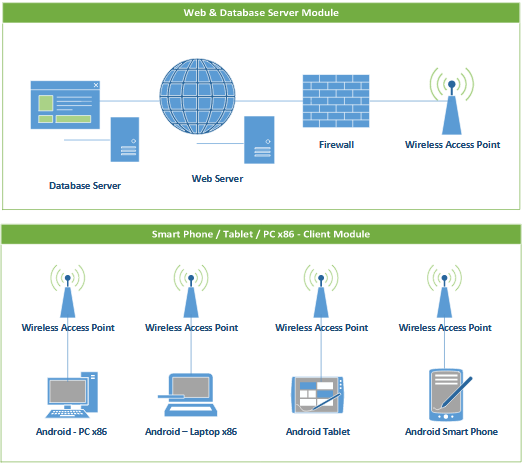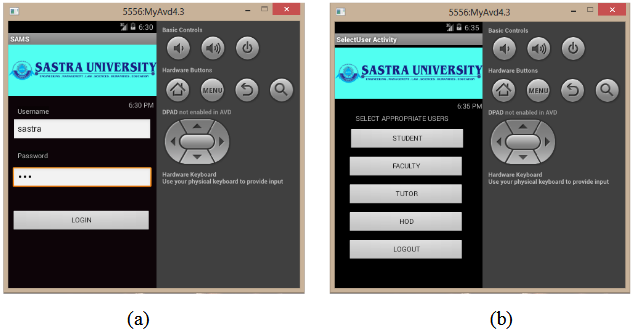ABSTRACT
Now a days, it is highly possible to adapt mobile computing in various applications. The portability, open source nature of smart phones and android development platform has made the development of application software for various environments as handy. Smartphone applications are resulted in paper less work, easy to use and time saving in nature. The wireless communication technology of smart phone enables the information transfer from the current client to remote database server, where ever the network range is available.
The Attendance Management System is a mobile computing software application, which focuses on an activity or function, which is based on management information system of academic institutions. In this work, the systems functionalities are categorized as a group and the similarities in grouped functionalities are designed and developed with reuse of software components.
CONVENTIONAL AUTOMATION OF AAMS
The conventional automation is very essential, when the existing system is analyzed and designed toward complete automation. The conventional mode of development provides the users, to experience the previous mode of operations, even it is now available with complete automation. The heterogeneous computing deals with this project in the manner of combining the computing’s of mobile and PC based together to provide basis of computing for this application. In this project, the traditional mode of manual attendance management, is replaced with PC application based and mobile app based activities. As for PC and mobile the platform of operating system is planned as Android OS.
DESIGN OF AAMS

Figure 1. Design of AAMS based on Technological Plan
The design of AAMS is having two categories of plan in it. The first plan is based on technical aspects and includes client / server computing architecture, medium of communication devices [Client (PC/Laptop/Tablet/Smart Phone), Server (Web/Database), Wireless Access Points] involved, application security details, and maintenance details of the entire system.
The second plan is rest with implementing the principles of management information system to make the entire system effective by which the management users can access the system according to their need and produce sufficient soft reports for analysis and take decision. The decision making effectiveness using the AAMS is proposed in the second category of plan.
DEVELOPMENT AND IMPLEMENTATION OF AAMS
This new automation system is embedded into android application which runs in mobile phone. In proposed system the faculty will mark the attendance using their respective android OS based device. On real time, the attendance is made available in the database server (on live server) by the faculty during the class conduction duration.

Figure 2. (a) General login of AAMS (b) Various users login
The main purpose of the user module is to provide accessibility of users. In this module, the various users of the institution are provided with their authentication to access the database for their operations.
DISCUSSION
In present system, faculties are marking the attendance directly in the paper and post them as data entry in server manually. The whole activities are stored in the database; at the end of the semester or session report will be generated by needful manner. The existing system is not user-friendly because the retrieval of data is very slow. The current system consumes more time. For computer system, it is hard for the faculty to carry along with them. All problems of existing system is taken into account; the new optimized system with automation is used in this project.
CONCLUSION
This app helps the faculties to reduce their work stress by reducing the time and calculations required to update the attendance manually. The various levels of management personals are utilizing the app in variety of ways like, viewing the attendance, performance details of students. By using this optimized mobile app, 24/7 the management personals are accessing the information for various decision making analysis.
Source: Sastra University
Author: P. Sivaram
>> Student DBMS Projects for Computer Science Students using Android
>> More Wireless Embedded Projects for Engineering Students